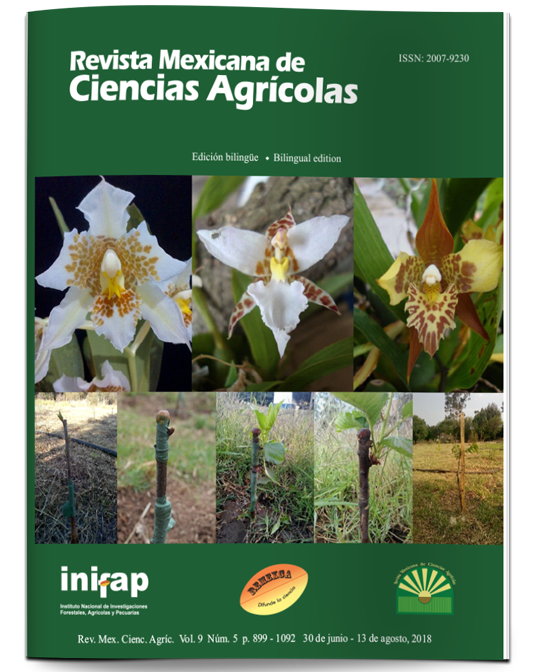Green garbage substrates for growing geranium (Pelargonium spp.) in container
DOI:
https://doi.org/10.29312/remexca.v9i5.265Keywords:
Pelargonium spp., alternative substrates, container cultureAbstract
In Mexico, the forest land is the main substrate used in the production of containerized ornamental plants, but its unlimited extraction causes a negative ecological impact. Among the alternatives for the replacement of the land of forest, are the garbage of gardening also called “green garbage”. There is a possibility that the inclusion of green waste as a substrate in the cultivation of containerized ornamental plants, have significant effects on the characteristics of growth and development of the same, so that the objective of this work was to characterize and determine the optimal dose for use as a substrate component for the production of containerized geranium. Physical chemistry laboratory analyzes were carried out and an agronomic evaluation experiment was carried out. Different proportions (100, 75, 50 and 25%) of green waste and scrubland were mixed, complemented with a general substrate (coconut fiber and sawdust, 50/50, v/v). A completely randomized design of eight treatments with eight repetitions was used. It was concluded based on the results that green waste has physicochemical characteristics similar to the land of the forest. In the growth and development of geranium in container, the results were statistically equal between the treatments of 100% of green waste and forest land in 16 variables studied. The green waste is a material that used as a substrate has the physicochemical characteristics necessary to successfully replace the land of forest in the cultivation of containerized geranium.
Downloads
Published
How to Cite
Issue
Section
License
The authors who publish in Revista Mexicana de Ciencias Agrícolas accept the following conditions:
In accordance with copyright laws, Revista Mexicana de Ciencias Agrícolas recognizes and respects the authors’ moral right and ownership of property rights which will be transferred to the journal for dissemination in open access. Invariably, all the authors have to sign a letter of transfer of property rights and of originality of the article to Instituto Nacional de Investigaciones Forestales, Agrícolas y Pecuarias (INIFAP) [National Institute of Forestry, Agricultural and Livestock Research]. The author(s) must pay a fee for the reception of articles before proceeding to editorial review.
All the texts published by Revista Mexicana de Ciencias Agrícolas —with no exception— are distributed under a Creative Commons License Attribution-NonCommercial 4.0 International (CC BY-NC 4.0), which allows third parties to use the publication as long as the work’s authorship and its first publication in this journal are mentioned.
The author(s) can enter into independent and additional contractual agreements for the nonexclusive distribution of the version of the article published in Revista Mexicana de Ciencias Agrícolas (for example include it into an institutional repository or publish it in a book) as long as it is clearly and explicitly indicated that the work was published for the first time in Revista Mexicana de Ciencias Agrícolas.
For all the above, the authors shall send the Letter-transfer of Property Rights for the first publication duly filled in and signed by the author(s). This form must be sent as a PDF file to: revista_atm@yahoo.com.mx; cienciasagricola@inifap.gob.mx; remexca2017@gmail.
This work is licensed under a Creative Commons Attribution-Noncommercial 4.0 International license.



